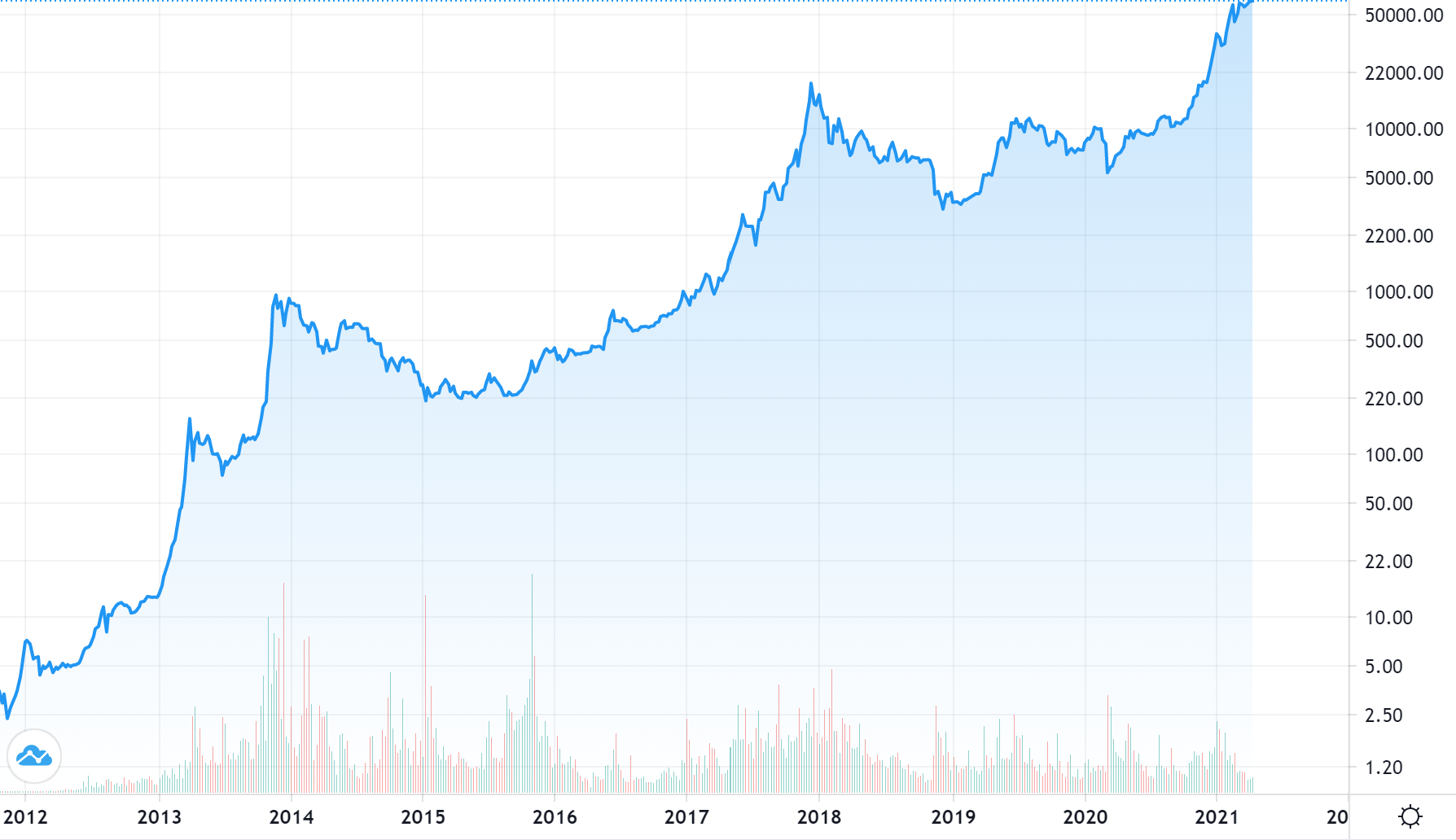Cryptocurrencies are experiencing a bubble reminiscent of the 17th-century Dutch Tulip mania. Here is a log-scale chart of the U.S. Dollar price of Bitcoin (presently the largest cryptocurrency) from 2012 to the present, showing a roughly 200% annualized increase in price over that period:
Popular cryptocurrencies like Bitcoin and Ethereum are not backed by any real assets. So what drives this appreciation in price?These pure blockchain cryptocurrencies do have intrinsic value, but that intrinsic value is nothing more than the computing power and infrastructure of their associated blockchains. Any value that people attribute to a cryptocurrency above the value of its blockchain is based solely on the expectation that other people will do likewise. In other words: The cryptocurrency bubble is being driven by the Greater Fool phenomenon.
Demand for a currency can certainly exceed its intrinsic value. Currency is a medium for exchanging value, and there is clearly demand for a decentralized, anonymous, secure means of exchanging value that is satisfied by cryptocurrency. (Blockchains themselves also have value as a service for validating the date and authenticity of data, such as contracts.) But that demand can be satisfied by any cryptocurrency: if the market price of one cryptocurrency inflates significantly above its intrinsic value then people who are buying cryptocurrency in order to exchange value with others (and people paying to place data in a blockchain) can use a currency that is cheaper – i.e., priced closer to its intrinsic value. Therefore the market equilibrium value of any cryptocurrency is limited by the barriers to entry of establishing a new cryptocurrency.
So what are the barriers to creating a new cryptocurrency? A blockchain has no value until it has attracted enough investors with enough of a stake to pay for its maintenance. The "currency" associated with a blockchain gets another bump in value once it is listed on a currency exchange where it can be easily exchanged for other items of value. But these barriers are negligible: Adding another blockchain to the mining marketplace and adding its associated currency to the thousands presently listed on the CoinBase exchange is virtually as easy as thinking up a new name.
If one day all the speculators wake up and decide they don’t value Bitcoin then its value will drop to whatever miners charge for continuing the Bitcoin blockchain. Could this happen? Students of the history of speculative bubbles will see it as a virtual certainty.
Comment on fiat currencies
Some speculators draw a false sense of security from comparing cryptocurrency to fiat currency. Those are not the same: Fiat currencies have value because they are backed by governments. For example, if everyone wakes up tomorrow and decides they don’t value U.S. dollars, dollars are still legal tender for debts. The U.S. government will still demand taxes in dollars, pay interest in dollars, and dispense benefits in dollars. A government's ability to support its currency is not unlimited, but it is still tethered by the government's control of power and resources.

No comments:
Post a Comment
Note: Only a member of this blog may post a comment.